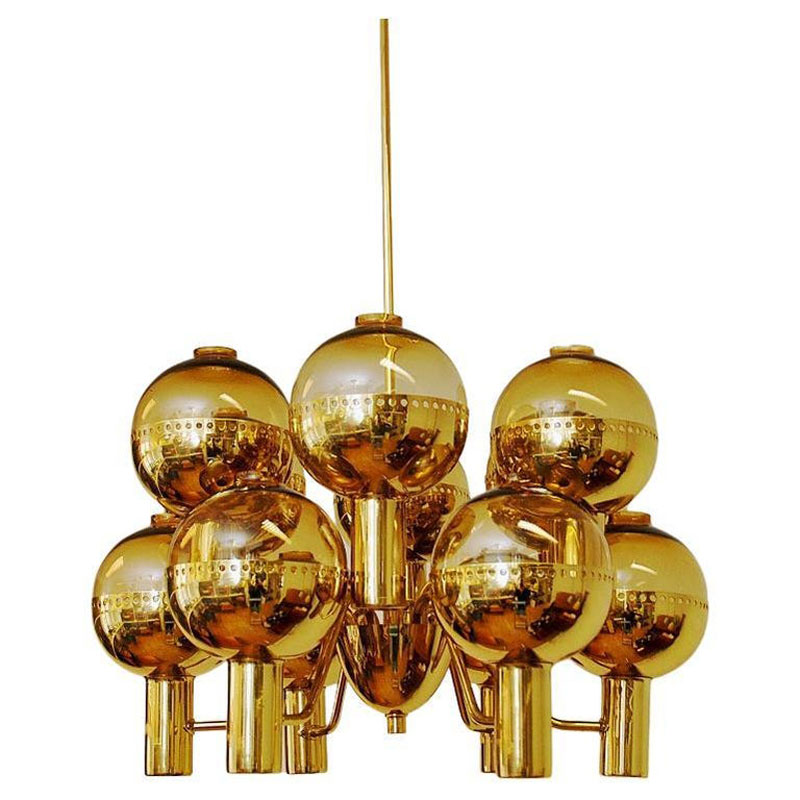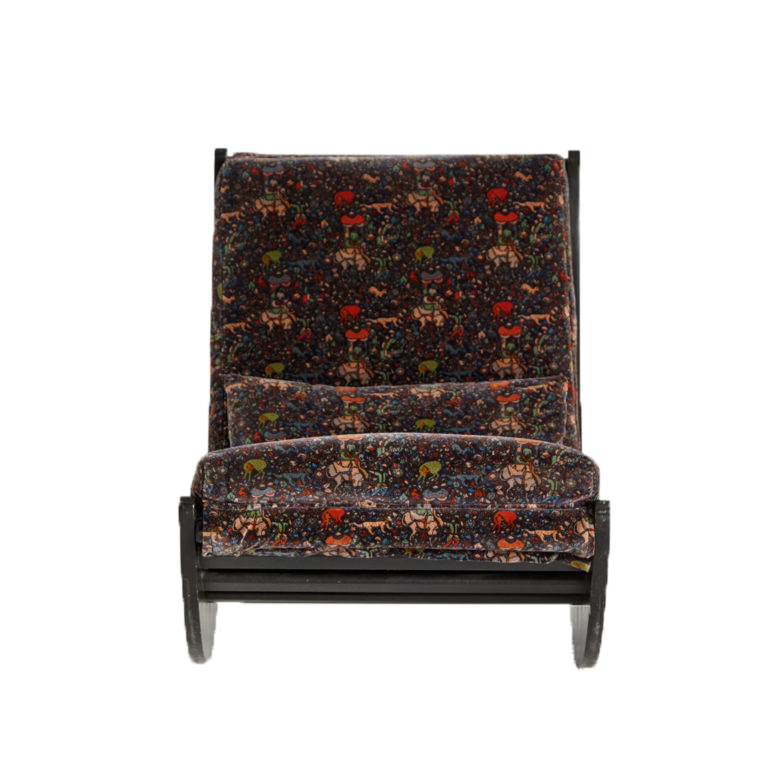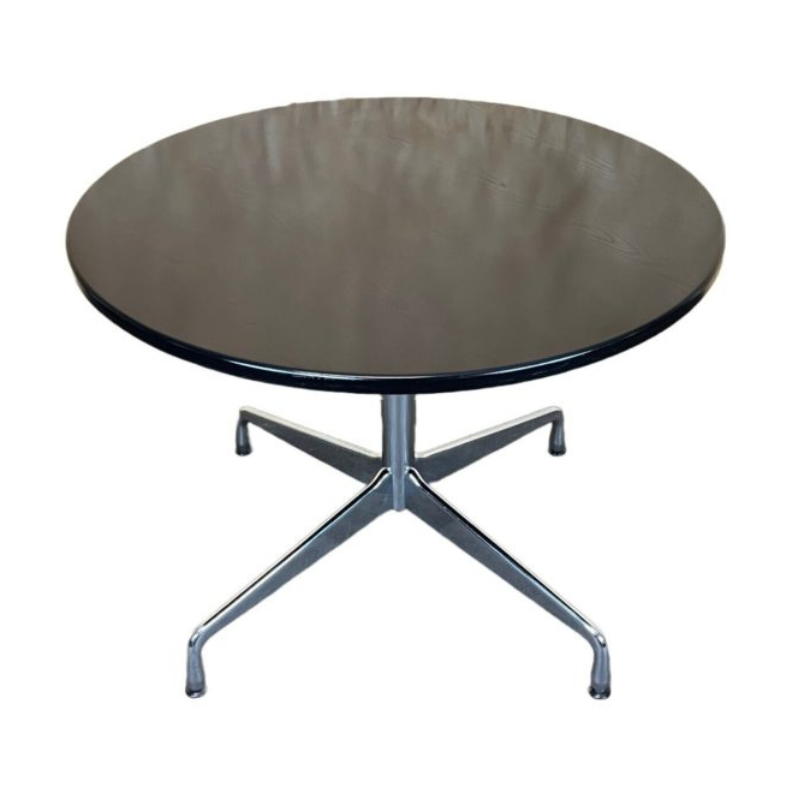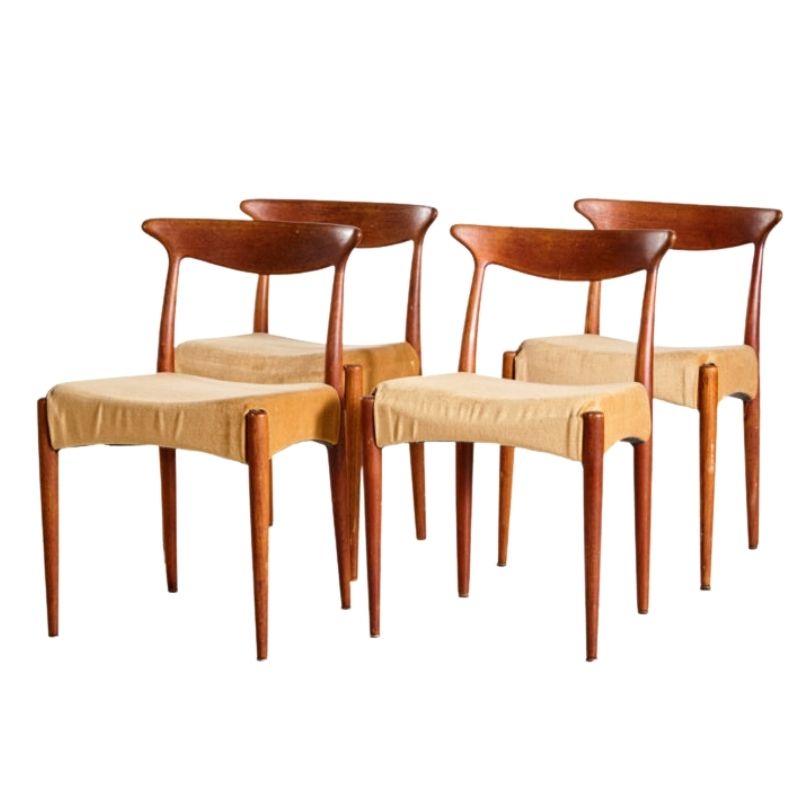The more I think about it...
the more I think that the Eames Eiffel bottom and the Grcic cone bottom iconically represent the procession of this type of chair design from the Eames time to Grcic's time. These two pictures say sooooooooooooooo much.
Neutral bouyancy vs. groundedness.
Space vs. surface.
Which would you rather sit in?
Has anyone sat in both--not at the same time of course :-)--to comment?
DC
I love the Grcic with the heavy cone base. The other is fine, too ... but I prefer the immense contrast of light + airy and heavy + opaque. It's beautiful.
In a perfect world, chairs like these would have accompanied me on the McDonald's playground as a child .... but McDonald's would be different too. I could have ordered a McSushi Happy Meal with a Vitra miniature as the toy.
Whitespike...
Now that is an ideal world worth working toward!
I've always wished Frank Lloyd Wright had been asked/allowed to design a McDonald's. Wouldn't ya love a Prairie Style McDonald's with wheat stock pattern stained glass?
Once upon a time I tried, as a consultant, to suggest to a company or two, that working with a series of designers might be a good way to brand a chain. Let all different designers work around the same well known logo, emphasizing it to the street. They were not ready for it 15 years ago, because chains were still in a land rush to oligopolize remaining interesection corners. But since chains have all finished penetrating all the markets they can in USA, maybe it is time to sell even more of the experience.
Maybe McDonald's can be talked into a designers series of McDonald's, at least in places like Beverly Hills, Palm Beach an other places they are otherwise resented. Renzo Piano lifts the ground up and slides a McDonald's in under it just off Golden Gate Park to go with the new science museum. Rem Koolhaus does a scaled down version of China TV next to China TV in Shanghai with the drive through in the center! Happy meals with good taste, Rem baby, if they can't taste good.
There really is no reason great architects can't go back to doing service stations. What could be more fantastic than hiring Robert Venturi to design a gas station on the strip in Vegas? Or a chain family restaurant there? Or a whole damn casino/hotel? Venturi does Vegas! This would be one of the major design/architectural events of the decade. Bob bringin' it all back to Vegas.
There's so little real showmanship left in real estate and architecture, however, that I am not sure it could happen. Turning Vegas into a theme park is not showmanship. It is turning it into a theme park--nothing more. Old Vegas was showmanship--an illusion in the desert. A theme park is post modern. It is an illusion of an illusion of entertainment. If Buggsy Siegel came back to life, he would do Venturi, or someone one else special in a minute...and then get whacked for cost overruns, AGAIN!!
My dearest dc,
Regardless...
My dearest dc,
Regardless of the architect, Palm Beach would never allow a McDonalds, or any other "chain restaurant" onto the island. It has amazed the old guard that a Starbucks recently opened on Worth Avenue in a restored Addison Mizner dwelling. I still can't figure out how they got that one past the planning and zoning dept. Interesting thought, just the same.
I hear, ya, Mark...
...but never say never, especially during a global economic meltdown. 15 years of inflation, followed by a 50% dollar devaluation, crashing stock and real estate markets and third, fourth and fifth generation inheritance splits fills places like PB with a lot of folks unable to keep up the neighborhood and the city council. Travel Chateau country in the Loire Valley, or any number of regions of UK and the Continent to see what happens to distinguished communities when the hegemony of empire begins to buckle. Without putting too fine a point on it, castles become tourist attractions and persons write costume drama novels about the way it used to be. Hope that's not the case yet for the good old USA, but post colonialism is not only a bitch for the ordinary folk. Lots of retrenching, you know.
Materiality . . .
While all of the posts make great points I think most have overlooked the sense of materiality when discussing the Eiffel base. True to their sense of play and exploration the Eames delved into unusual materials in search of forms & functions - the very same path that led them to the fibreglas and plywood chairs.
There are lots of experiments and prototypes that show that Charles & Ray were experimenting with wire as a means of creating volume and lightness (none quite as successful as what Bertoia would later accomplish). Included in the tryouts are a wire sofa and multiple wire chairs. In the successful production were the wire based tables; the Eiffel, cats cradle, rocker, & dowel bases; the K-wire chairs; and even some echoes in the cross-struts of the ESUs.
Wire seems like an obvious choice of material for the Eames. It contibues many juxtapositions common in their work: mass vs. airiness, strength vs. lightness, frame vs. support, organic vs. industrial.
Personally I would prefer the chairs in the H-base at a table. The wire gets a little precious to me, and should be treated as such: Eiffel/cats cradle bases in singles or pairs, where the contrast between base & seat can be adequately shown off. The only exception is the K-wire chairs- I think they look quite clunky on anything other than the Eiffel base. But then again - isnt it all personal opinion?
...and McDonalds
What kind of hurdles would a chain face in light of reinvention? Would it be a good idea for chains to reinvent their locales? Is the fact that they are a chain completely contradictory to uniqueness of store locations?
I'd say the biggest hurdle is not shooting yourself in the foot. McDonalds makes a perfect case study of reinvention because wherever they go the food remains ubiquitously bad. Therefore the only things left to reinvent are media campaigns and locations.
In many locales McDs has adopted a little design aesthetic - usually through neccesity. In some locations they have opted for Emeco Navy chairs - virtually indestructable by bare human hands. In Manchester, Vt. the McDonalds was forced to adapt itself to a traditional colonial house. They also had to forgoe the Golden Arches for signage. Both compromises were needed in order to comply with the town's strict historical society, as well as the town's self image.
However, turning to the shoot-yourself-in-the-foot hurdle - lets look to Europe, where the clown wanted to reinvent itself as an upscale eaterie. They contracted with Fritz Hansen to provide (one can only assume vinyl) Egg, Swan, & Series 7 chairs. The look was so successful that McDs started buying knock-offs, which led Fritz Hansen to pull the plug on the relationship and issue a blitz of press excoriating McDonalds for simultaneously buying copes and suing those that infringe on its own copy/trademarks.
Lucifersum...all good points...
The question are:
1) is there a market segment that McDs is not already serving, either spatially at locations, or sociologically in population cohorts;
2) could that market segment be attracted by my idea of designer franchises; and
3) could it be served with McD's required rate of return on investment?
I suspect there is a market, but that McD's has investigated and found that it is too small to serve.
On the other hand, there experiment in Europe that you mention suggests that in fact more well heeled persons with more refined aesthetic tastes and pleasures probably would be strongly attracted to such establishments, whether or not the food were improved upon.
McDonald's knows their stuff. They are worth billions/trillions from slinging mundane food to people in a hurry at prices most can afford at least once a week, while you and I can make no such claim. And they are among the most politically and strategically saavy of corporate players, because they have had to become so as a result of participating in soooooooooooooo many political jurisdictions and from serving customers from so many socioeconomic segments. I can honestly say I have never met an American from USA, who has not eaten more than once at McDonalds, whether they liked it or not. Could they do better? Yes. Could Charles Eames have done better? Yes. We all could. The question is: can we find a way for McD's to do better through improved design. We don't necessarily have to make them more money, either, though that is always a hugely persuasive argument. As an oligopolist, they are nearly guarrantied of making money. What oligopolists seek more intensely than profit is the strategic advantage that perpetuates them into the next 10-20 year planning period. If their oligopoly position can be strategically preserved by various strategies and tactics, they can always figure out ways to achieve desired rates of return; that is the beauty and appeal of oligopoly to firms. Designers need to be cognizant of this in providing these firms with product solutions, whether they discuss it openly, or not.
Like a 3-D "drawing"...
The all-wire chair was my very first mid-century purchase over 25 years ago.
It struck me as an exquisite "drawing" of a chair, in three dimensions. I enjoy the rather extreme complexity of the lines floating in space.
So radical the first time I saw it in 1987, and to this day still one of my favorite Eames designs. I have one with a cover, but I still prefer the bare wire chair just to enjoy visually.
The eiffel base may not be my favorite base to pair the large shell, but it certainly does not look "wrong" to me either. I very much enjoy the contrast of the complexity with the simpleness of the shell, as others have already mentioned.
I appreciate your bravery for stating your true thoughts. It is your right to not enjoy the look of even the best design.
My local café
recently purchased what I assume are Modernica armless Eiffel shells (with the polypropylene seat ?) and I was looking at the base. Yes, there's a lot of wire there, which must amount to a considerably greater amount of steel than would be consumed by four simple tubular legs. But those wire struts are the only means of making the principle leg member -- a 1/4" rod, I guess -- stiff enough to do its job. Thus, it was an aesthetic choice. I also like the way the whole construct becomes a diagonally-placed square by the time it reaches the central intersection. And of course all of this makes a nice contrast to the simple, colorful shell.
If you need any help, please contact us at – info@designaddict.com









